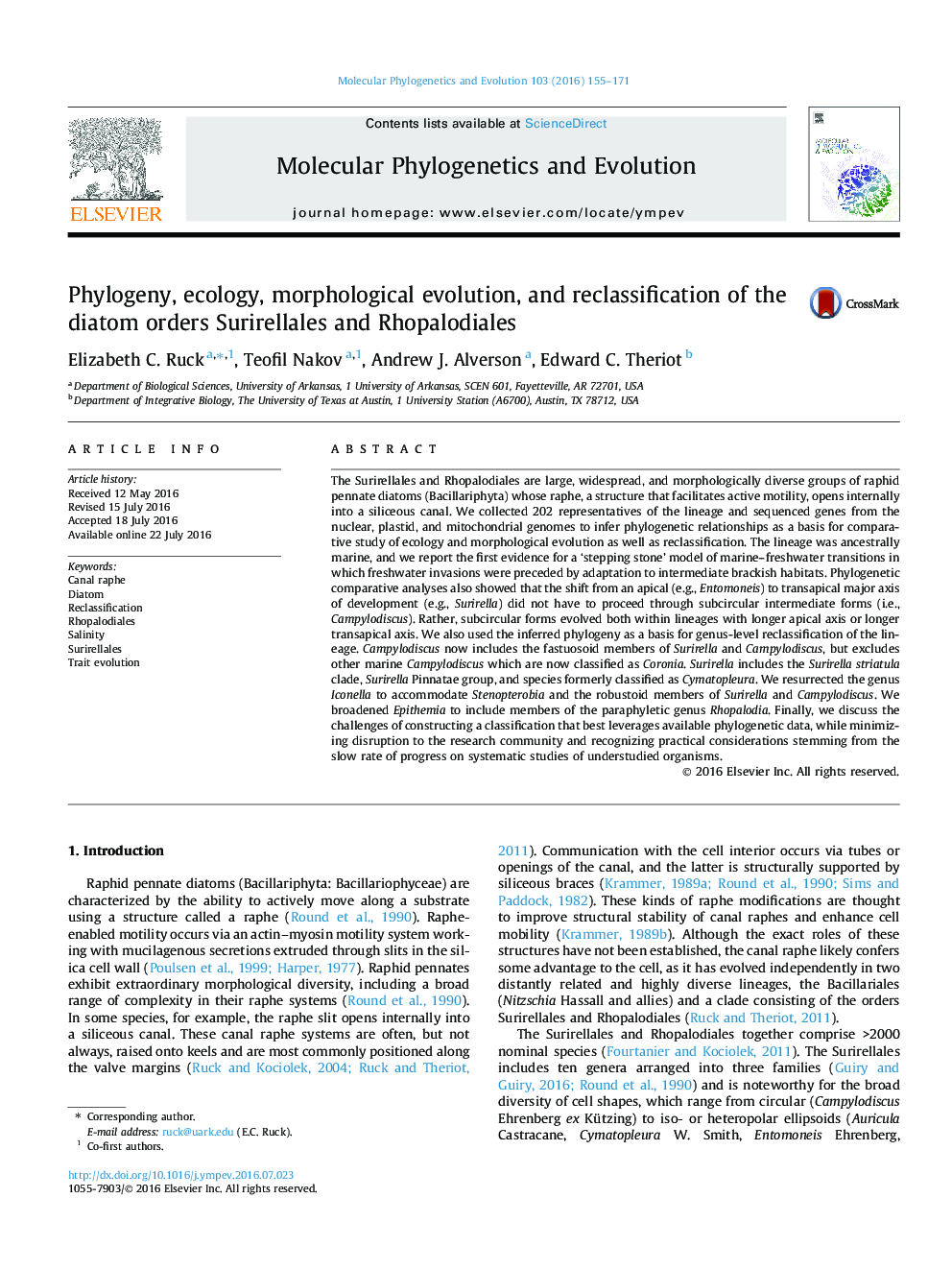| Article ID | Journal | Published Year | Pages | File Type |
|---|---|---|---|---|
| 2833636 | Molecular Phylogenetics and Evolution | 2016 | 17 Pages |
•Most-inclusive to date multi-gene phylogeny of the diatom orders Surirellales and Rhopalodiales.•At least seven transitions from an ancestral marine environment to habitats with lower salinity.•Stepwise colonization of freshwater with required brackish water precursors.•Evolutionary shift in development, from “long” to “wide” cells, did not have to proceed through circular intermediates.•Partial reclassification based on the molecular phylogeny and morphological synapomophies.
The Surirellales and Rhopalodiales are large, widespread, and morphologically diverse groups of raphid pennate diatoms (Bacillariphyta) whose raphe, a structure that facilitates active motility, opens internally into a siliceous canal. We collected 202 representatives of the lineage and sequenced genes from the nuclear, plastid, and mitochondrial genomes to infer phylogenetic relationships as a basis for comparative study of ecology and morphological evolution as well as reclassification. The lineage was ancestrally marine, and we report the first evidence for a ‘stepping stone’ model of marine–freshwater transitions in which freshwater invasions were preceded by adaptation to intermediate brackish habitats. Phylogenetic comparative analyses also showed that the shift from an apical (e.g., Entomoneis) to transapical major axis of development (e.g., Surirella) did not have to proceed through subcircular intermediate forms (i.e., Campylodiscus). Rather, subcircular forms evolved both within lineages with longer apical axis or longer transapical axis. We also used the inferred phylogeny as a basis for genus-level reclassification of the lineage. Campylodiscus now includes the fastuosoid members of Surirella and Campylodiscus, but excludes other marine Campylodiscus which are now classified as Coronia. Surirella includes the Surirella striatula clade, Surirella Pinnatae group, and species formerly classified as Cymatopleura. We resurrected the genus Iconella to accommodate Stenopterobia and the robustoid members of Surirella and Campylodiscus. We broadened Epithemia to include members of the paraphyletic genus Rhopalodia. Finally, we discuss the challenges of constructing a classification that best leverages available phylogenetic data, while minimizing disruption to the research community and recognizing practical considerations stemming from the slow rate of progress on systematic studies of understudied organisms.
Graphical abstractFigure optionsDownload full-size imageDownload as PowerPoint slide
